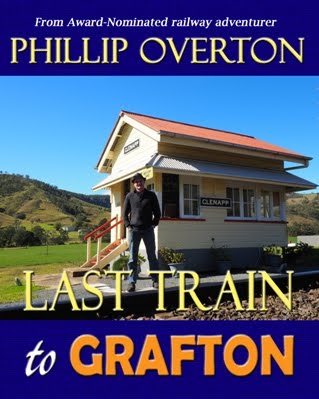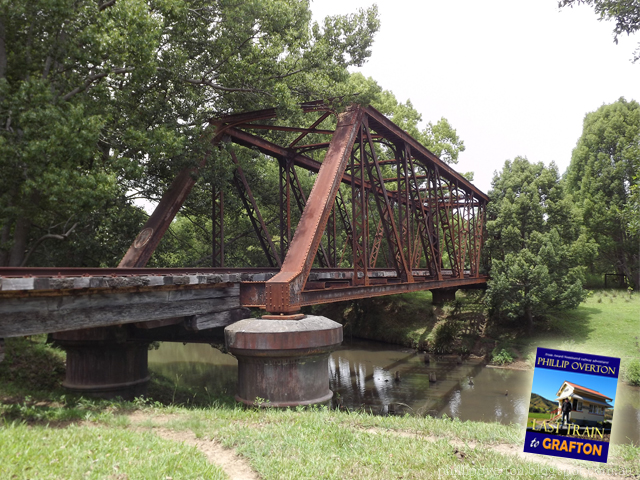Mooball: tired cows, no trains!

After Mooball Railway Station closed in 1974, the town found a way to remain a popular stopping place for travelers on the Pacific Highway thanks to a bit of ingenuity. Adopting the Moo from Mooball, locals painted the signposts, businesses and even rocks on the hillside in a spectacular array of black and white Fresian cow spots and gave the town a reputation for having a comical case of Mad Cow Disease! For a while, the town thrived, drawing tourists from near and far. But that was before the upgrading of the Pacific Motorway between 2002 and 2007. Mooball was bypassed by a faster highway to the east, and in 2004 the entire Murwillumbah Railway Line in Northern New South Wales was subsequently closed.
 |
| The former Mooball Railway Station site was on the right side of the track. Photo 2014. |
These days, getting to Mooball requires you to exit the Pacific Motorway at the Yelgun Rest Area if heading north from Byron Bay, or follow the Tweed Valley Way through Murwillumbah if coming from the Gold Coast. This former stretch of the Pacific Highway followed the same route through the Burringbar Ranges as the railway did when it first opened in 1894. And, if like me, you're retracing this stretch of the Murwillumbah branch line, then yes, there are still some very cool railway relics to be seen around Mooball. However, if you're looking for a black and white spotted Moo Moo Station in town forget it. Since the very early 1990's there has only been a single stretch of railway track that passes through Mooball alongside the highway, and the signal hut with the bagged up crossing lights opposite the pub is the only trace of any railway station you will find. While the cow spots in town are beginning to look a little faded and the main highway through Mooball can at times look deserted, at the north end of town and you will find the Mooball Railway Bridge is still standing across Burringbar Creek.
 |
| The Mooball Railway Bridge on the old Murwillumbah Line. 2014. |
The old railway bridge stands in an open area, making it easy to photograph. All up, the Murwillumbah Line had 158 bridges over the course of its 132 km of railway track, and if they were all as long as the bridge at Mooball, then passengers would have spent more time in the air than on the ground. Maybe the former Pacific Coast Motorail that once ventured to the end of the line at Murwillumbah could have changed its name to the Pacific Coast Monorail.
 |
| The deck of the old railway bridge at Mooball, NSW. Photo taken 2014. |
When you actually climb up on the railway bridge and walk its length as I did, you quickly realise that the track condition truly reflects a railway line that was built back in the 19th Century. And while political parties of all persuasions finger point and bandy around figures such as the $900 million the NSW Government said it would cost to reopen the line back in 2011. Perhaps what should be considered is building a new line altogether on the North Coast of New South Wales. This time one that actually goes all the way to the Gold Coast. And as for the town of Mooball? Losing the train didn't suck the life out of the town, realigning the Pacific Motorway did. Perhaps what is needed is for the old railway line to somehow breathe some new life back into the tiny Tweed Valley towns that have long been forgotten now that the Pacific Highway no longer passes through them. Because it felt like we were the only visitors in town.
Mooball was just one of the abandoned railway station towns featured in my photographic railway bush poetry book Last Train to Grafton, out now!
Mooball was just one of the abandoned railway station towns featured in my photographic railway bush poetry book Last Train to Grafton, out now!



Comments